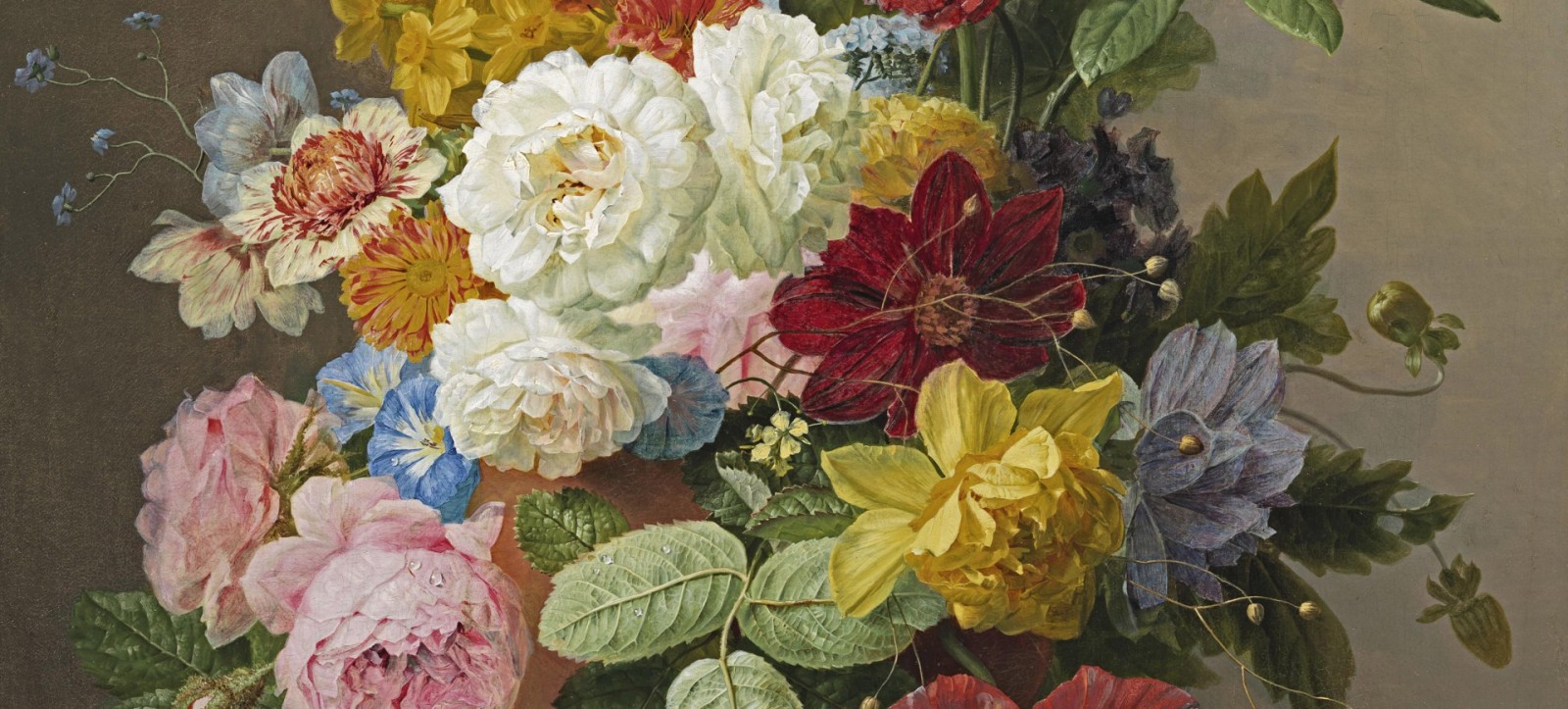
22 February 2021
The National Gallery, London’s current Picture of the Month is Willem Koekkoek’s View of Oudewater, c.1867. Koekkoek came from a dynasty of painters and specialized in minutely detailed, atmospheric townscapes influenced by the work of Golden Age artists such as Pieter van Saenredam (1597-1665) and Gerrit Berckheyde (1638-1698), both of whom are represented in the National Gallery’s superb Dutch collection. Dutch painting is intimately linked with the nation’s sense of identity. Art flourished in the seventeenth century, when the provinces of the northern Netherlands threw off their Spanish overlords and became a formidable trading nation. Nineteenth century painters paid homage to this glorious era of creativity when their state was being formed.
Richard Green’s online exhibition Dutch Romantic Paintings presents two townscapes by Willem Koekkoek and a flowerpiece by Arnoldus Bloemers. All the works pay homage to Golden Age painting while imparting a contemporary sensibility. Koekkoek’s Busy street in a Dutch town, painted in the 1880s, is a capriccio view. With its tall, gothic church and houses with stepped gables, it evokes picturesque old towns such as The Hague, Utrecht and Maastricht. Koekkoek, like his predecessor Berckheyde, revels in the textures of warm red brick and cobbled streets.
The top hat and fashionable dress worn by the gentleman and lady in the centre foreground of this picture place it firmly in Koekkoek’s own time. However, the maidservant standing in the door behind them might have stepped out of a painting by Vermeer or Pieter de Hooch. Koekkoek creates a sense of continuity that suggests a society in harmony with itself.
The same can be said of his Dutch street in summer, where sun pours down on townsfolk shopping and chatting by a canal and a man wheeling a handcart along the cobbles. By Koekkoek’s day, large cities like Amsterdam had nineteenth century industry and suburban sprawl, but the artist – like his patrons – prefers to concentrate upon the timeless charm of old urban centres.
Arnoldus Bloemers’s flowerpiece, made in the 1830s, is in the tradition of earlier painters such as Jan van Huysum (1682-1749), but with the brilliant hues and exuberant variety of blooms fashionable in his own era. More than twenty species can be counted. The work reflects the sophistication of botanical knowledge and horticulture – today still an important part of the economy – developed by the Dutch over three centuries. Bloemers mingles age-old favourites like the roses with dahlias, a Mexican plant with a variety of jewel-bright colours that appealed to nineteenth-century taste. Also coming into vogue was the rhododendron seen at top right, the staple of many a Victorian shrubbery. This painting provides pure delight, but it also celebrates Dutch scientific acumen and commercial ingenuity.
Share